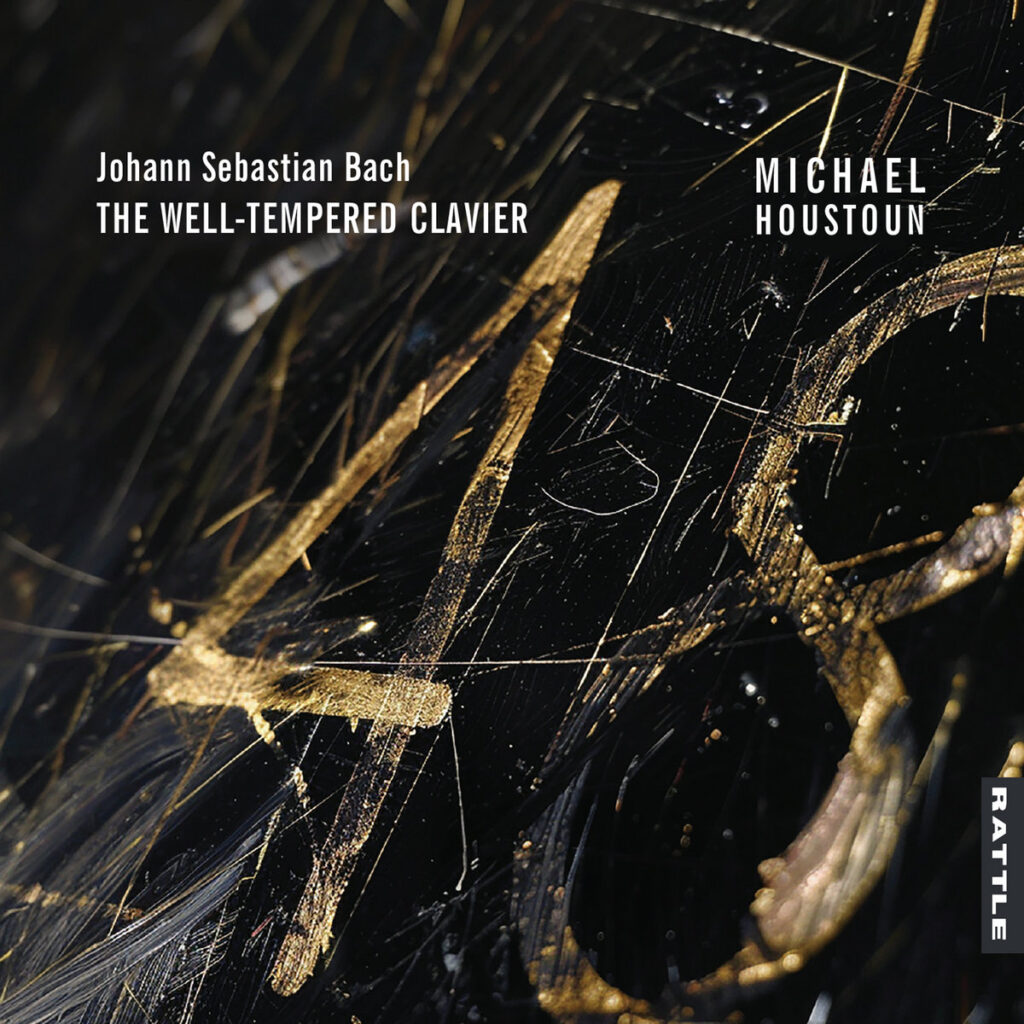
JS BACH – The Well-tempered Clavier Books One and Two BWV 545-593
Michael Houstoun (piano)
Rattle Records RAT D155 2024 (4)
Recording Producer – Kenneth Young
Recorded by John Kim and Steve Garden
at the Symonds Street, University of Auckland Music Theatre
“Not ”Brook” but “Ocean” should be his name.”
(Ludwig Van Beethoven, commenting on the German “Bach” meaning “Brook”)
No recording dates are given in the characteristically austere documentation accompanying Rattle’s issue of this historic recorded undertaking by Michael Houstoun, the first by a New Zealand pianist featuring Johann Sebastian Bach’s legendary “48” – the composer’s twice-completed survey of all twenty-four major and minor keys, each in “prelude-and-fugue” form, making ninety-six individual pieces in all. It’s surely worthy for posterity’s sake to note that the 2024 recording dates for the first of the two books were April 6th to 8th, and for the second, July 5th to 8th (my thanks to Steve Garden for that information!).
Houstoun has previously played both books of Bach’s monumental work in concert over some years – quick searches I made turned up occasions like a 2016 Adam Concert Room performance in Wellington of the entire Bk.2 as part of the Judith Clark Memorial Piano series, and consecutive-evening performances of each of the two books of the “48” in the Music Theatre of the University of Auckland in May 2017, and again on two October afternoons in The Great Hall, Christchurch Arts Centre, that same year. These works have obviously been in his repertoire for sufficient time to consider and make the decision to commit his oft-sounded-out thoughts about them to a recording.
The notes accompanying this production, written by Houstoun himself, fittingly express what this music means to him, inextricably as a pianist and as a human being, with the singular phrase “a series of bottom lines of incalculable value”. He goes on to discuss both melody and harmony in the light of his quoting Beethoven’s words which describe Bach the “master of harmony” by means which the pianist describes as “the miraculous weaving together” of melody. And he talks about the music’s “sheer pulsation” of rhythm and the sense of an infinite trajectorial energy through which Bach seems at times to “carry us into eternity” (a phenomenon which I vividly recall “drew me in” on my own first hearing of the work, many years ago!). Another of Houstoun’s “bottom lines” refers to the actual “character” of the individual pieces, the pianist maintaining that there is more to each one than being either a “keyboard exercise” or “an amenable grouping of notes and rests” – though as the notes themselves contain no dynamic or tempo markings, much of the “character” which emerges from each piece would be at the performer’s own discretion.
What gives these performances something of a singular flavour is Houstoun’s making available to the listener his own brief impressions of each of the pieces’ separate “characters” – he had previously listed these in the programme notes to his former live performances, citing Debussy’s example with his Preludes of publishing titles or descriptions of the pieces. Hans Von Bulow did a similar thing when performing Chopin’s 24 Preludes, some of which epithets have actually stuck to a couple of the pieces over the years. Though curious to know how many others might have applied such an idea to Bach’s work I could find only one instance recorded of a previous occasion when a pianist had performed the “48” with their own descriptions of each Prelude and Fugue listed in the programme, along with some of the responses to this being done! The latter were, to say the least, varied – I’ve chosen just two polarising samples below…..
This is a terrible idea. You will burn in the Lake of Fire for even considering such a thing.
If someone doesn’t like this, can they just not read them {the titles}? For me they would give an interesting perspective on the performer’s thoughts.
I find myself happy with the latter reaction, in that, especially in the case of Bach’s unadorned scores, ideal performances would surely feature an amalgam of inspirations, ideas and sounds from both composer and performer. How far the latter chooses to reveal such characterisations as a performer is, of course, a personal choice, as is the listener’s in terms of “taking them on”.
From time to time when listening to these stunningly-wrought realisations of Bach’s ineffable genius from Houstoun, I found myself wanting to go back to other interpretations of certain of the pieces I’d heard – by no means did I want to revert to exhaustive comparisons, but merely to register the extent my previous reactions to the music were here either replicated or modified. I’d listened most often to the sets by Sviatoslav Richter, Tatyana Nikolaeva, Andras Schiff and Angela Hewitt (the latter’s second 2007-8 recording) over the years and was interested to “place” my reaction to Houstoun’s performances in the light of those earlier hearings. What follows below isn’t a track-by-track commentary, but a series of observations from my journey with this new recording, interspersed by memories of detail which, as I recall, gave somewhat different impressions, and which stimulated a desire on my part to “update” my own relationship with this remarkable work.
At the outset of Houstoun’s performance (Prelude and Fugue No. 1 in C Major) I was instantly entranced – here was tone, tempo and temperament which seemed ideally suited to the notes, creating a kind of encapsulation of the whole in a single span of music-making, an “exposition”, then a “development” and finally a “recapitulation”, more in an emotional than a technical sense, of course, but particularly apparent in this glowing account, one which when I listened to other performances I found myself continuing to value Houstoun’s as highly as a singular experience.
The contrast afforded by the C Minor Prelude (No.2) is suitably dramatic, with touches of the gothic from the pianist’s closely-worked harmonic shifts in the piece’s cadenza at the end, to which the fugue offers a stern reprove! A marvellous change in colour and momentum is afforded by the following C-sharp major Prelude, like thistledown at play, with gorgeously feathery articulations, tempered by a schoolmistressy kind of following fugue, a-fluster at all the gaiety, but secretly longing to join in. One of the great ones of the set is No. 4 in C-sharp minor (Houstoun calls it “Lamentoso”), its reflective sorrow demonstrative in the Prelude and ritualistic in the fugue, the latter building towards institutionalised grief by the end – Houstoun’s recording is quite a contrast with Angela Hewitt’s “growing from darkness” approach in both pieces, a more personalised kind of sound-world – but how beautifully Houstoun himself “sounds” the fugue’s concluding phrase, here.
My own listener’s introduction to the “48” was with the D Major No. 5, and the late, great John Ogdon’s sparkling playing of it all on a recital disc – such “joie de vivre” in the Prelude, and then beautifully-contrasting “lampoonings” of the piece’s opening notes in the Fugue, “snapping” the two-note payoffs of this response in a way that Houstoun eschews with his less playful pairings (both Hewitt and Andras Schiff follow Ogdon’s ebullience, here) though the new performance still delights with its almost schoolboy exuberance of the whole.
It would take too long to go through all of the remaining pieces of Book One as above, though some I still need to “single out” for their ear-catching effect and the superb finish of their presentation. One such is the following No.6, the D Minor, with a Prelude Houstoun calls “Night Ride”, and to which he brings flowing legato tones that actually suggest a dream-like airborne journey, though I don’t “get” his “Creeping Anxiety” impression of the Fugue, which to me suggests more of a “hall of mirrors”, equally gorgeous in effect but suitably bewildering in its echoings and inversions.
A pairing which surprises with its “weight of sorrow”, following as it does the grandly ceremonial E flat Major prelude and Fugue is the latter’s minor-key counterpart, No.8, with its eloquent aria, and sombre three-part Fugue, all of which Houstoun sustains nobly in a kind of “dark suspense”, a mood which the following E Major Prelude’s contrasting sunniness immediately dispels, especially with its determinedly cheerful Fugue, exactly like “three village gossips”, the phrase by which Angela Hewitt describes its effect!
Moving onto the second disc, we first encounter the brightly fresh F-sharp major Prelude (No.13), with Houstoun’s title “Playing Around” – not a note is wasted in this up-front and totally engaging reading, the accompanying Fugue having a similarly “open” vocal quality, admirably suiting the pianist’s epithet “Sing”. I also instantly warmed to the vigorously athletic No. 15 in G Major and its attitude-striking fugal companion, with its opening subject’s final “so what?” single note, and its droll inversions which suggest a reply. No.17 pairs a jolly dance with a Fugue known in the German-speaking world as the ”Cathedral Fugue”, a most attractive coupling, moving from gaiety to a more contained and ceremonial mood, one which in the pianist’s hands here, glows and sings.
In places Houstoun’s playing for me recalls that of Helmut Walcha, the blind German keyboard player of a couple of generations ago, and from whose recordings I learnt some of Bach’s keyboard works, among them the “English Suites” – Walcha favoured steady, largely unvaried tempi whose cumulative effect always seemed to compensate for a sparseness of variety and colour – and I was reminded of this by the G-sharp minor Prelude and Fugue, here, the former sombre, the latter unrelenting (echoing the pianist’s description “A grim tale” in its implaccable delivery). What a joy, then, to encounter its successor, the bright, breezy and beautiful A major Prelude (No.19) with its gorgeously pealing bells in the left hand, and then delight in its zany companion, a Fugue whose trajectories can render the unprepared mind bemused and befuddled before the notes finally scamper into well-drilled lines and dance one’s senses towards the end. Gorgeous playing!
I warmed also (who wouldn’t!) towards the toccata-like No.21 in B-flat major (Houstoun’s title for the Prelude enshrining a somewhat more insistent song than that of Vaughan Williams’ celebrated lark), with the Fugue suggesting some kind of celestial angelic rejoicing at this earthly manifestation of exuberance and freedom. Its antithesis is surely its minor-key equivalent (No. 22), the Prelude music of mourning, which Houstoun, not without reason, styles as “Road to Golgotha” (Christ’s crucifixion-place), here, a lonely and pitiless way, almost Schubertian in a “Winterreise” sense. The five-voiced fugue which follows is superbly essayed here, containing the feeling of a multitude immersed in grief.
Whatever consolation one might seek from any such feeling is duly encompassed, though not so much by the bright-and-bubbly B Major Prelude (No. 23) nor its gregarious Fugue with what Angela Hewitt describes as its “gentle transparency” – surely any such “grand consolation” is the preserve of No.24, the B Minor Prelude and Fugue, one whose performance I first heard by Sviatoslav Richter many years ago, and whose tones and trajectories have haunted me like no other performance since, save for Tatiana Nikolayeva’s similarly-conceived reading. Despite it being one of the few Preludes in the WTC with the composer’s own tempo direction (Andante) one can find recordings of it played at a variety of speeds, from Youri Egorov’s near-static amble to Glenn Gould’s purposeful trot, each with its own orbital kind of ambience – while my preference is still for the expansive Russian-school (Egorov/Richter/Nikolayeva) approach, the other pianists mentioned above (Hewitt, Schiff, Gould) have broadened my perspectives regarding different approaches to the music. Houstoun’s playing of the Prelude here unstintingly aligns with the latter group, thus stimulating further re-thinking on my part of the music’s varied capabilities.
And so we’re brought to Michael Houstoun’s exploration of Bach’s Book Two of his “The Well-tempered Clavier”, which the composer, at this time working in Leipzig as Cantor at the Thomaskirche, built up from various sources with constantly-added revisions, enlargements and transpositions. Book One had been extensively used by the composer in his teaching, and after fifteen years he would have wanted a change, as well as “updating” his own compositional style. But he also wanted to “collect and systematise” his own output, which included revising his thoughts regarding a new collection of pieces in twenty-four keys, and producing something with numerous and significant differences. So, Book Two is longer, the writing is more complex, and has a higher degree of technical difficulty for the performer.
Right from the outset the difference is apparent, with the C Major Prelude of Book Two beginning on the grandest scale, in marked contrast to the gentle simplicity of Book One’s opening. Houstoun’s title “The Universe as a Temple” and his monumental pianism reflects the scale of the composer’s conception here, while the three-part Fugue’s energy and playfulness is characterised as “Invitation to Joy (birthright)”. I loved Houstoun’s delineations of the C sharp major Prelude No. 3 , with its mesmerising harmonic shifts and its energised coda-like “Fughetta”, the latter preparing us for the Fugue proper – a character, this one, with a slightly gauche aspect at its beginning, but flexing its muscles increasingly and creating increased momentum toward the end.
I confess to being surprised by the severity of the C sharp minor Prelude (No. 4), whose sounds I’ve more often heard “breathed” as much as played in places, allowing its lyricism to more readily “touch a nerve” – and the Fugue here I thought also had an insistence I found wearisome by the end. But amends are made with the gloriously ceremonial D Major Prelude, trumpets and drums revelling in Houstoun’s vigorous playing. And what a dramatic change in mood with the Fugue! – Houstoun’s “Alms giving” description is curiously appropriate, with its solemn, reverential air of benevolence. Contrasts abound, here, as the following Prelude, No. 6 in D minor, bursts upon us with what sounds like vehemence at first but gradually gives way to a gruff kind of drollery – and Houstoun gives the Fugue just enough “schwung” to suggest a kind of musical M.C.Escher study in levitational contrasts before the composer deposits us in our bemused state on ground level once again.
Houstoun is all grace and charm with the E-flat major Prelude (No.7), a lovely Pastorale-like dance, whose Fugue, with its rising fifth was considered in some quarters a synonym for God, and Bach himself considered the key of E-flat major in accordance with “the peace of mind that flows from the Trinity” – in all, a happy concordance of music, composer and interpreter. The straightaway more angular D sharp minor Prelude (No.8) has a different, more obsessive character (I liked Houstoun’s “Agreeing to disagree” description!), its Fugue described by the famed commentator Donald Francis Tovey as an “Aeschylean chorus”, (Aeschulus was a Greek poet who regarded music as an important “extra dimension” in the drama), the music’s intensities here underlined (as Bach was wont to do with his fugues) by successive stretto-like entries of whatever subject.
All of this is then left behind in the most disarming way here, by the Prelude No. 9 in E major, with Bach treating our senses to a beguiling fusion of gentle voices here (some of Houstoun’s most ingratiating playing of the set) and in the old-fashioned fugal “Stile antico” which follows (and, was that a snatch of “Rule Britannia” I heard right at the fugue’s end?). Bach’s invention here has played havoc with my intention of singling out highlights from the set and producing a readable review, as the great moments simply keep coming! – in the wake of the disarming E major work we get an arresting E Minor Prelude (No.10) with its steady stream of semiquavers occasionally played alongside a long trill, their combination heightening the tensions, and a Fugue which the famous harpsichordist Wanda Landowska described as “combatative and vehement”, which qualities Houstoun does full justice with some superbly-controlled playing.
Definitely worth a mention (and closing the third disc) is the Prelude No. 12 in F Minor, written by Bach in what was becoming the new “empfindsamer Stil” (sensitive style) , made popular by the composer’s son Carl Philipp Emanuel, and demonstrating something of that aforementioned “updating of his (Bach senior’s) own compositional style”. And so to the final disc through which, in the interests of readers being able to “complete the course” I’ll quickly pass, through Houstoun’s winsomely fluent F sharp major Prelude and its attractive gavotte-like Fugue, and the “singing” wistfulness of the following Minor-key Prelude , and its monumental, more stoical Fugue. Houstoun then gives the Master’s eye an engaging glint with the sparkling G Major Prelude and its “toy fanfare” Fugue, before returning to severity with the double-dotted G Minor Prelude (No.16) and its fugal mix of brass calls, repeated notes and grand final gesturings. And mention must definitely be made of the pianist’s masterful control in the Fugue of the following A flat Prelude, penetrating the increasing thickness of the texture with great sensitivity and a sure sense of where it’s all going!
I liked the “galant” style of the following G sharp minor Prelude (No.18) with its delicious chromatic descent in the piece’s middle, and its Fugue taking us into similarly fantastic-sounding byways (with Houstoun clear-headed, as always, as to where he’s taking the listener!). The same qualities help to illuminate the Prelude No.20 in A minor with its constant vertiginous exchange and inversion of themes, dream-sequence stuff that pushes the limits of tonality, especially in the piece’s second half, and in the somewhat zany Fugue that follows (perhaps Bach’s most uncompromising, almost feral in its attitude!) The gently lyrical B flat major Prelude (No.21) and its minuet-like Fugue that follows is part restorative (Houstoun calls the Prelude “Lyric pleasure’ and the Fugue “Persuasive conversation”) and part preparatory for the expected rigours of the work’s final three pieces.
In effect we have already been subjected to the most demanding of the pieces’ travails, as each of the remaining trio is respectively a satisfying summation of rigour, energy and delight (even Houstoun at one point enjoins us to “be of good cheer”!). Beginning with the Prelude in B flat minor (No.22) which has a gently insistent, almost bell-pealing quality, but followed by a more rigorous Fugue bent upon forward motion of both subject and its inversion, we are then taken to the more bubbling and winsome B Major with its “concerto-like” passages that suggest a soloist in places, and with a Fugue that achieves by its deceptively “spare” beginning a wondrously festive air in Houstoun’s hands. But the biggest surprise is the concluding dance-like B Minor Prelude which, though in a “self-contained” minor key has its own particular glow of satisfaction, its buoyancy continued in the Fugue, the sequence as firmly and deftly characterised by Houstoun as his approach to the entire collection. Bach here chooses to conclusively proclaims his genius not with any self-conscious grandeur or brilliance but with humanity and generosity – all are things to which Michael Houstoun responds throughout this set with playing of remarkable technical brilliance and, for me, in most instances regarding the individual pieces, persuasive empathy. Whatever one’s tastes it’s an enterprise whose achievement richly rewards investigation, and as such can be enthusiastically recommended.
u
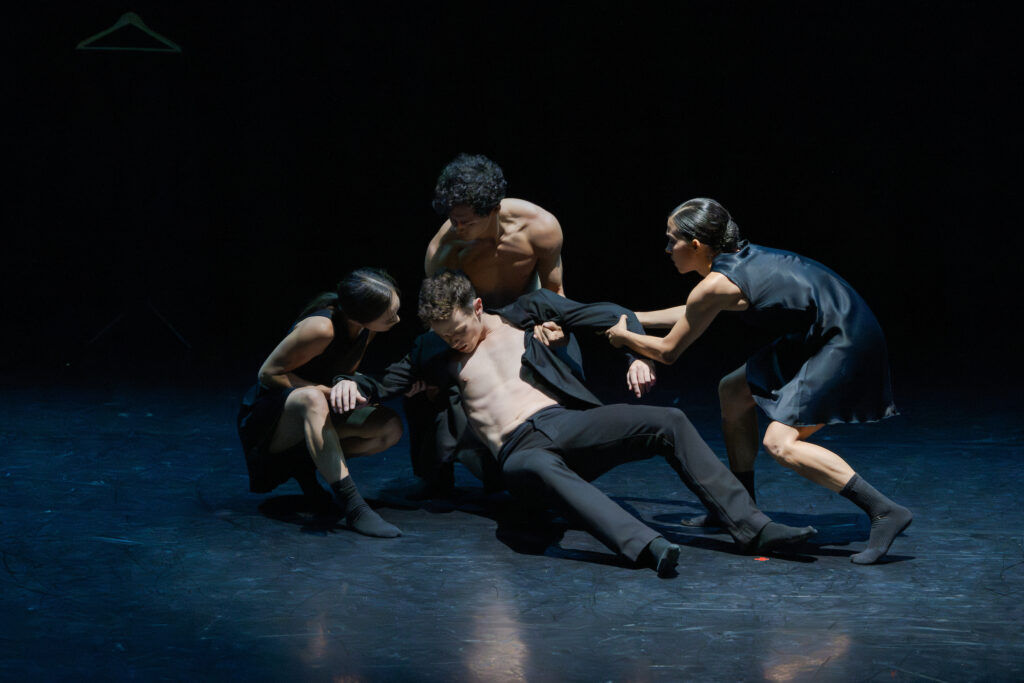

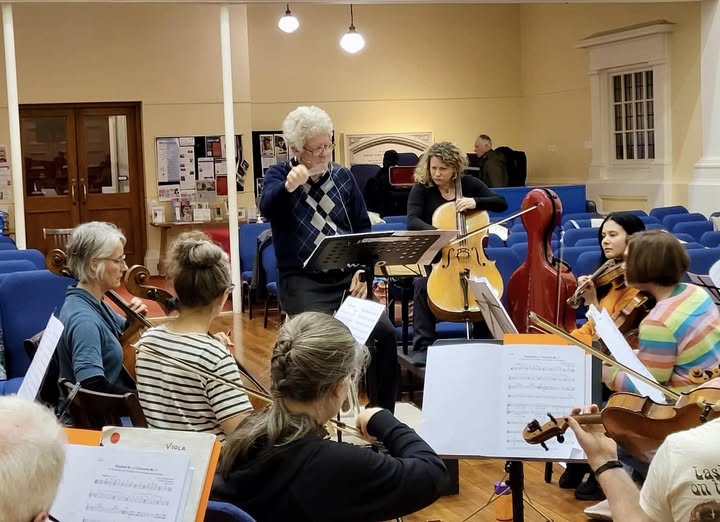 Donald Maurice (conductor) and Inbal Megiddo (‘cello) rehearse Shostakovich with the Wellington City Orchestra, December 2024, at St.Andrew’s Church, Wellington
Donald Maurice (conductor) and Inbal Megiddo (‘cello) rehearse Shostakovich with the Wellington City Orchestra, December 2024, at St.Andrew’s Church, Wellington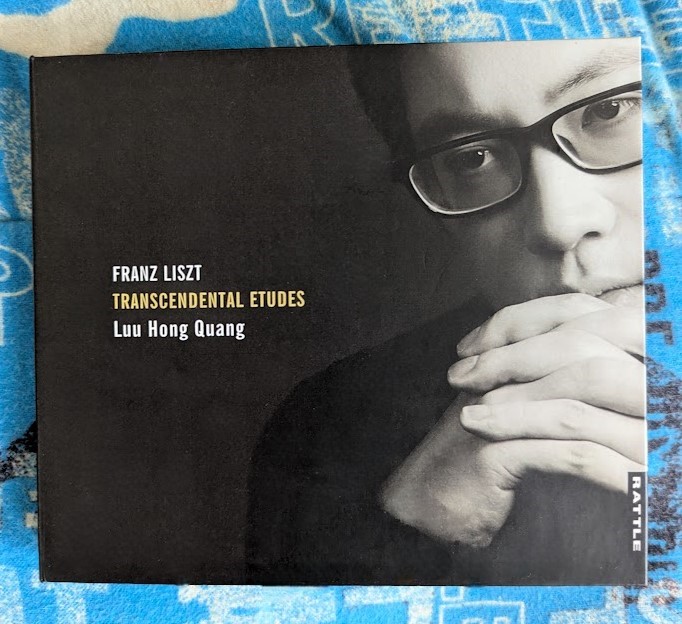
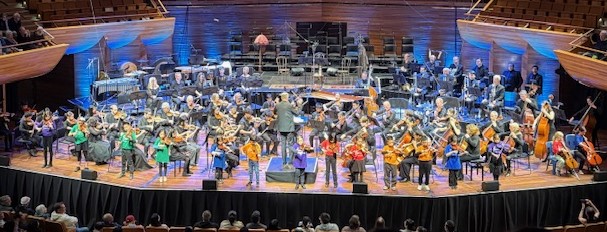 Arohanui Strings perform with Orchestra Wellington and Music Director Marc Taddei at the Orchestra’s latest concert “The Jazz Age”
Arohanui Strings perform with Orchestra Wellington and Music Director Marc Taddei at the Orchestra’s latest concert “The Jazz Age” Wellington City Orchestra presents:
Wellington City Orchestra presents: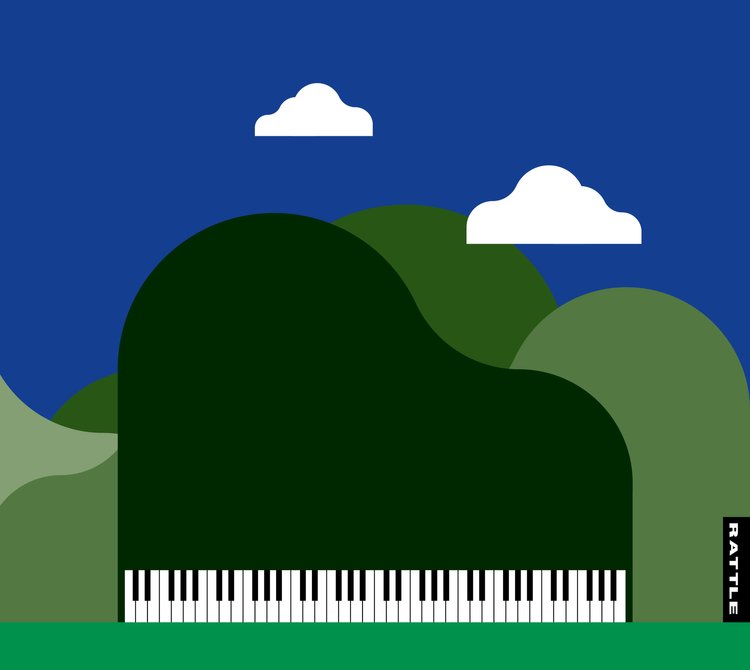
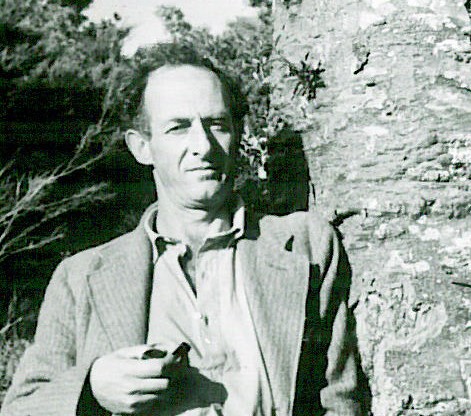

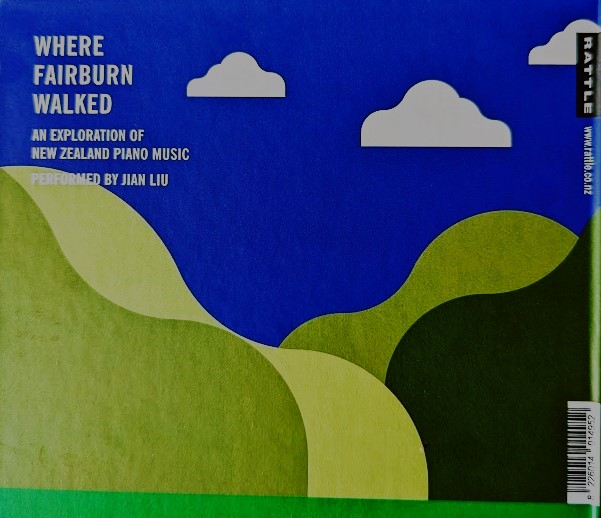
 Duo Enharmonics – Beth Chen and Nicole Chao (piano duo)
Duo Enharmonics – Beth Chen and Nicole Chao (piano duo)